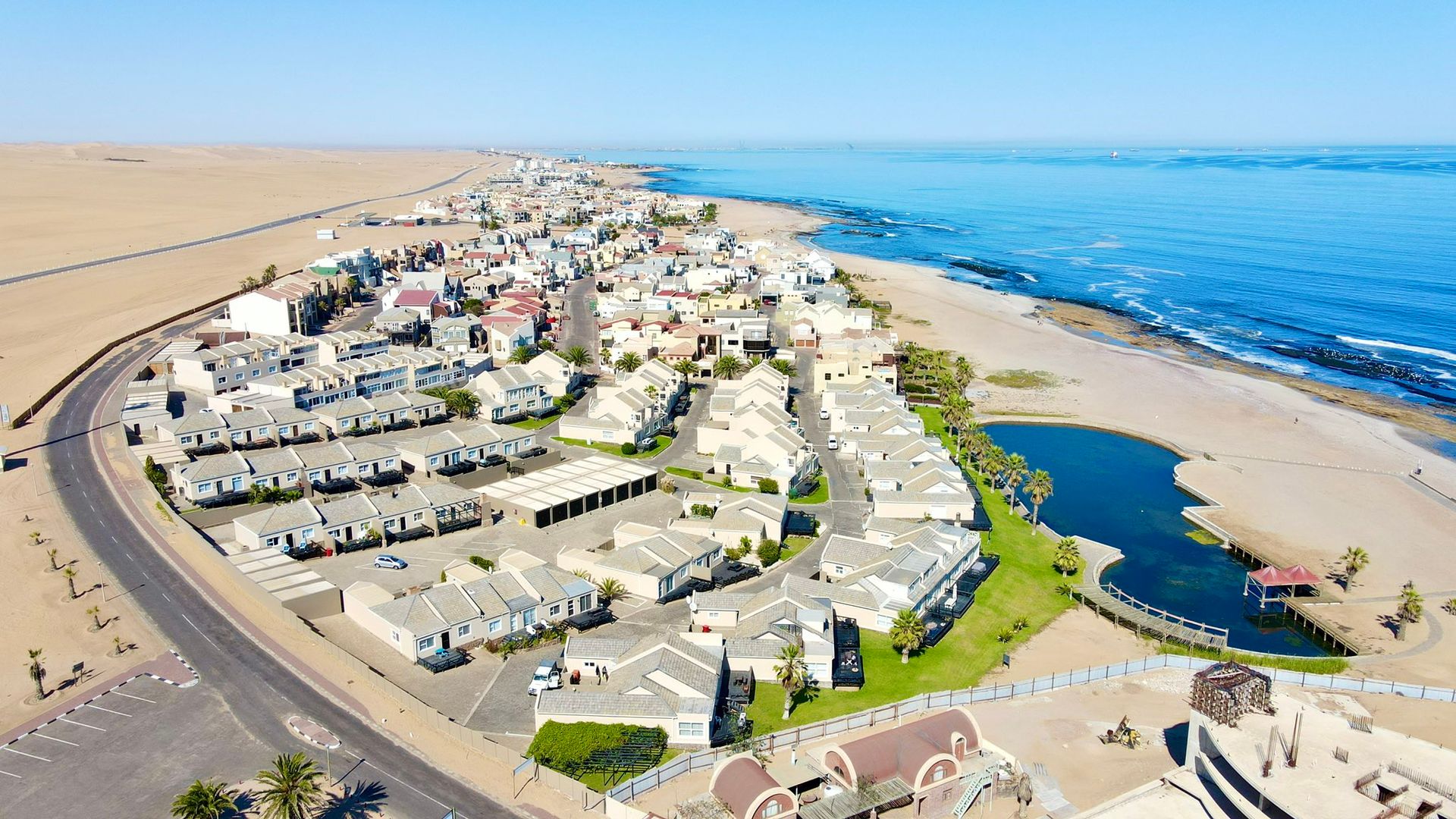Walvis Bay, a small yet historically significant port city located on Namibia’s Atlantic coast, holds a prominent place in the country’s journey to full independence. While Namibia formally became an independent state on March 21, 1990, Walvis Bay’s unique history and the political complexities surrounding its control make its return to Namibia a symbolic moment in the country’s final steps toward sovereignty. This article explores how Walvis Bay became a powerful symbol of Namibia’s full independence, marking a critical chapter in the nation’s long and arduous struggle for self-determination.
The Early History of Walvis Bay
Walvis Bay’s history is intricately tied to Namibia’s colonial past. Originally inhabited by indigenous groups such as the Nama and OvaHerero, the area eventually attracted European settlers during the 19th century. The bay’s natural harbor made it an attractive site for shipping and trade. In the late 19th century, Great Britain took control of the bay, incorporating it into the British Cape Colony as part of broader colonial ambitions in southern Africa.
Unlike other parts of Namibia, which were colonized by the Germans in the late 1800s, Walvis Bay remained a British colony. Following Germany’s defeat in World War I, Namibia became a League of Nations mandate under South Africa, but Walvis Bay’s status as a British possession was not altered. South Africa’s subsequent apartheid policies were also applied to Walvis Bay, though the area remained under British control until the 1960s.
Walvis Bay in the Context of Namibian Independence
By the time Namibia began its fight for independence in the 1960s and 1970s, Walvis Bay remained an unresolved issue. While the rest of Namibia struggled under South African rule, Walvis Bay’s British status created an unusual situation in which the rest of the country fought for freedom from South African occupation, but the bay remained outside of their jurisdiction.
The South West Africa People’s Organization (SWAPO), Namibia’s primary liberation movement, sought to gain control of Walvis Bay as part of its vision for a unified, independent Namibia. The city’s return was seen as crucial for the country’s political and economic stability. It was not only symbolic of Namibia’s full sovereignty but also of its ability to control key strategic assets like its coastline and the vital port.
The situation was further complicated by international law and politics. While Namibia’s independence was largely recognized by the United Nations and the majority of African states, South Africa refused to relinquish control over the region, maintaining a firm grip on the area under its administration. Walvis Bay was one of the final obstacles to Namibia’s full sovereignty.
Negotiating the Return of Walvis Bay
The return of Walvis Bay to Namibia became a central issue during the negotiations for the country’s independence in the late 1980s. After years of armed resistance and diplomatic efforts, Namibia’s struggle for self-determination reached a significant turning point with the Tripartite Accord of 1988, which facilitated the formal transition of Namibia from South African rule to full independence.
The accord, brokered by the United Nations, the United States, and Cuba, was an agreement between South Africa and SWAPO, outlining the conditions under which Namibia would gain independence. While the Namibian independence process was largely set in motion, Walvis Bay was not automatically included in the agreement, as South Africa had maintained its claim to the area. This led to heated discussions about how Walvis Bay would fit into the post-independence nation.
The solution came in the form of a bilateral agreement between South Africa and Namibia, signed in 1992, which ensured that Walvis Bay would be transferred to Namibia’s control. This agreement laid the groundwork for Namibia’s full independence, as it was the final piece in the puzzle of reclaiming all Namibian territories from colonial and foreign control.
The return of Walvis Bay was more than just a logistical matter—it was a symbolic act. For Namibians, it represented the country’s final break from its colonial past and apartheid oppression. Walvis Bay’s incorporation into Namibia marked the completion of the nation’s journey from a divided and occupied land to a united and sovereign state.
Walvis Bay After 1990: A Symbol of Unity
When March 21, 1994, arrived—just four years after Namibia’s formal independence—Walvis Bay became a part of the newly born republic. The integration of the bay was not only a physical transfer of control but also a representation of Namibia’s identity as a united, independent nation. This milestone also marked the conclusion of South Africa’s occupation of Namibian territory, solidifying Namibia’s full independence.
From a political standpoint, Walvis Bay’s return was crucial for several reasons. First, the city was home to Namibia’s only deep-water port, vital for the country’s economic development. The port’s location along the Atlantic coast gave Namibia access to global trade routes, making it a strategic asset. Having control over Walvis Bay allowed the newly independent Namibia to more effectively manage its imports and exports, directly impacting its economy and ensuring that it was no longer dependent on South Africa for access to international markets.
Secondly, Walvis Bay represented the end of apartheid’s racial divisions and the beginning of national reconciliation. For many Namibians, the return of the city symbolized the final dismantling of the structures of racial segregation and inequality that had permeated the region during South Africa’s rule.
Walvis Bay as an Economic Engine
Since the return of Walvis Bay to Namibia, the city has continued to play a vital role in the country’s economic development. The port is one of the most advanced in Africa, facilitating trade between Namibia and other countries on the continent and beyond. It has also become a center for industries such as fishing, transportation, and mineral exports.
In addition to its economic significance, Walvis Bay has become a hub for tourism and marine conservation, drawing visitors from around the world to experience the region’s natural beauty. The area is known for its rich marine life, including dolphins, seals, and whales, which attract tourists and researchers alike.
Walvis Bay as a Symbol of National Pride
Beyond its practical implications, Walvis Bay continues to be a source of national pride for Namibia. The peaceful transition of control over the city is a testament to the country’s commitment to democratic values, peace, and diplomacy. Its return marks the culmination of years of struggle, resistance, and negotiation, and it remains an enduring symbol of Namibia’s hard-won freedom and independence.
Today, Walvis Bay is a thriving city, contributing to the overall prosperity of Namibia. As the country continues to evolve and build upon its democratic institutions, Walvis Bay stands as a reminder of Namibia’s unique journey to independence—an emblem of its resilience, determination, and the unifying power of national sovereignty.
Walvis Bay is much more than just a port city. It represents Namibia’s full sovereignty, the final step in the country’s long and painful journey to independence. From a strategic and symbolic perspective, the return of Walvis Bay in 1994 marked the completion of Namibia’s territorial integrity and signaled the country’s ability to stand on its own, free from colonial and apartheid rule. Today, Walvis Bay continues to be a hub of economic growth, a vibrant center of marine life, and, above all, a powerful symbol of Namibia’s unity and resilience as a newly independent nation.
Join 'Namibia Today' WhatsApp Channel
Get the breaking news in Namibia — direct to your WhatsApp.
CLICK HERE TO JOIN












